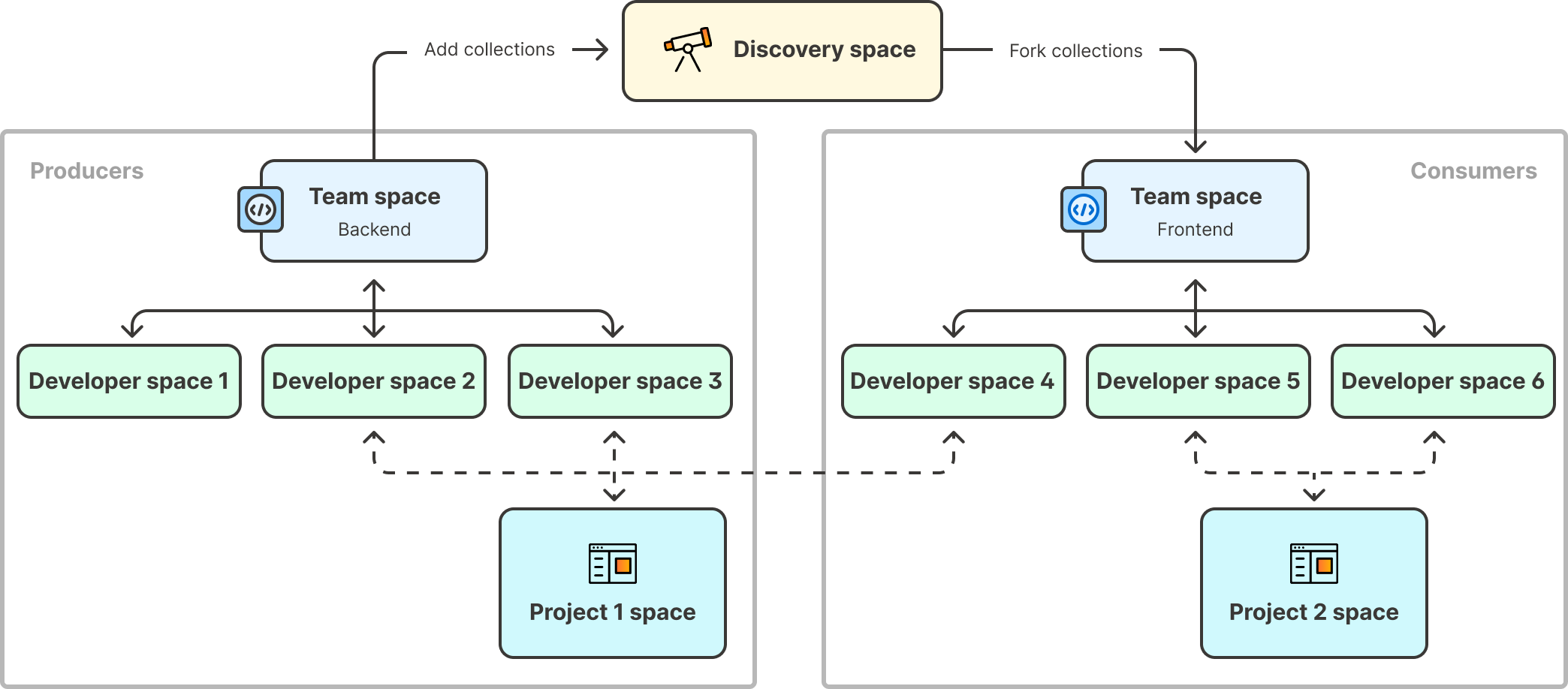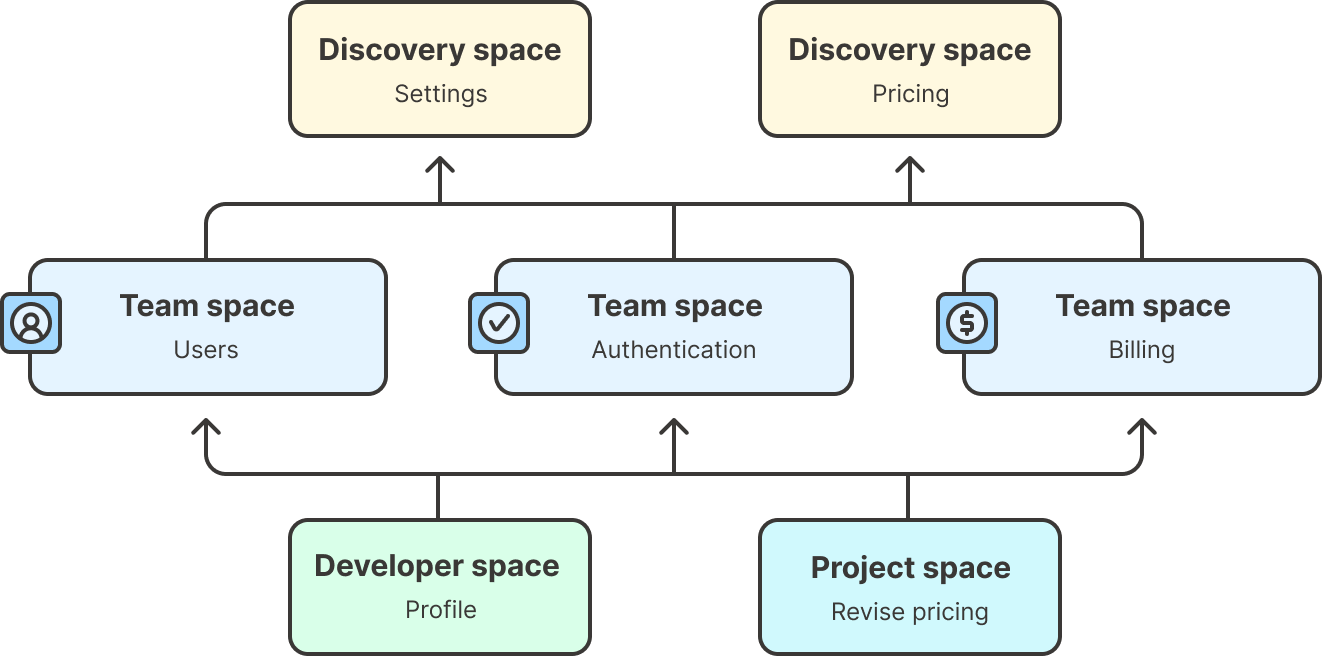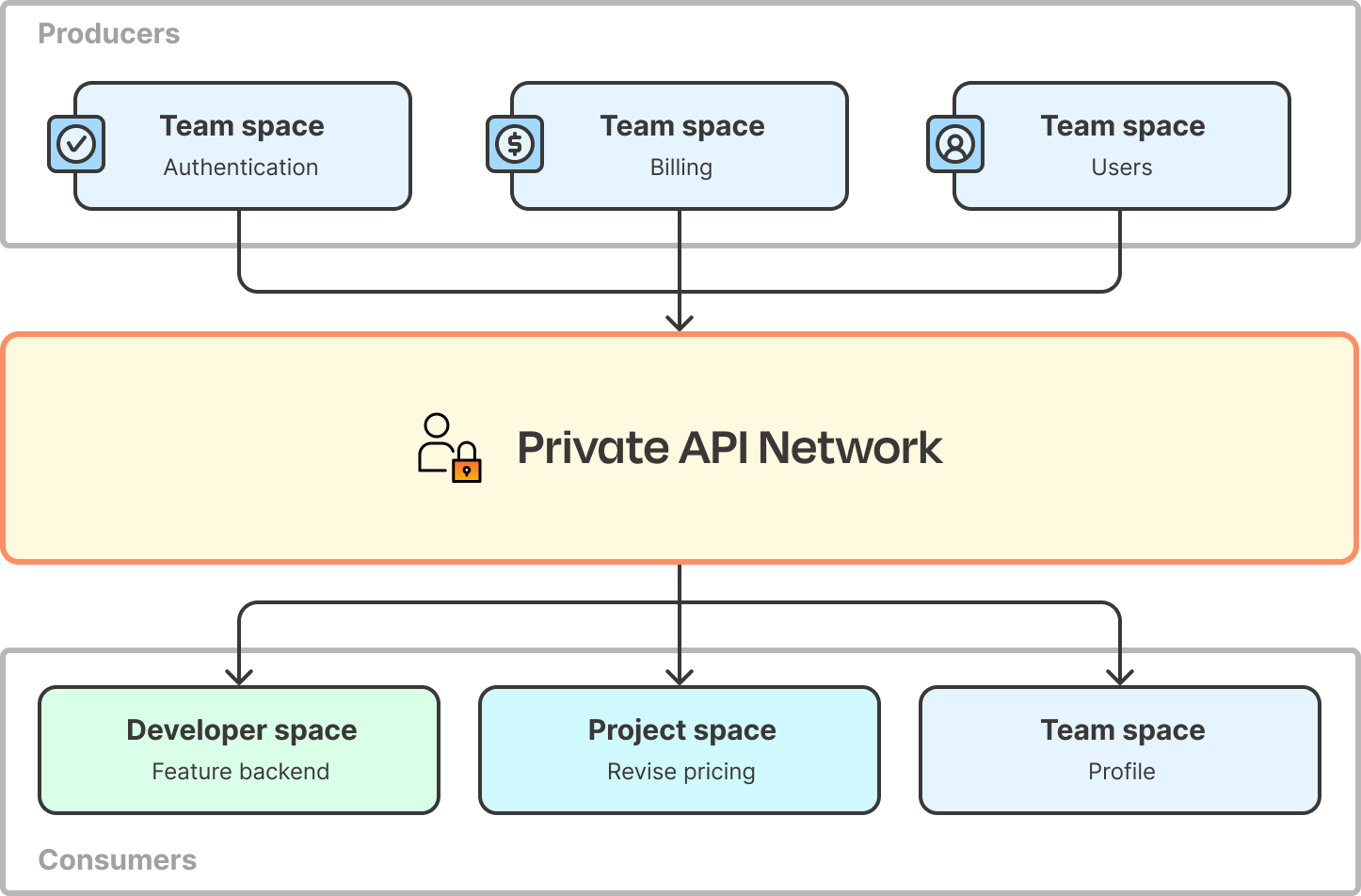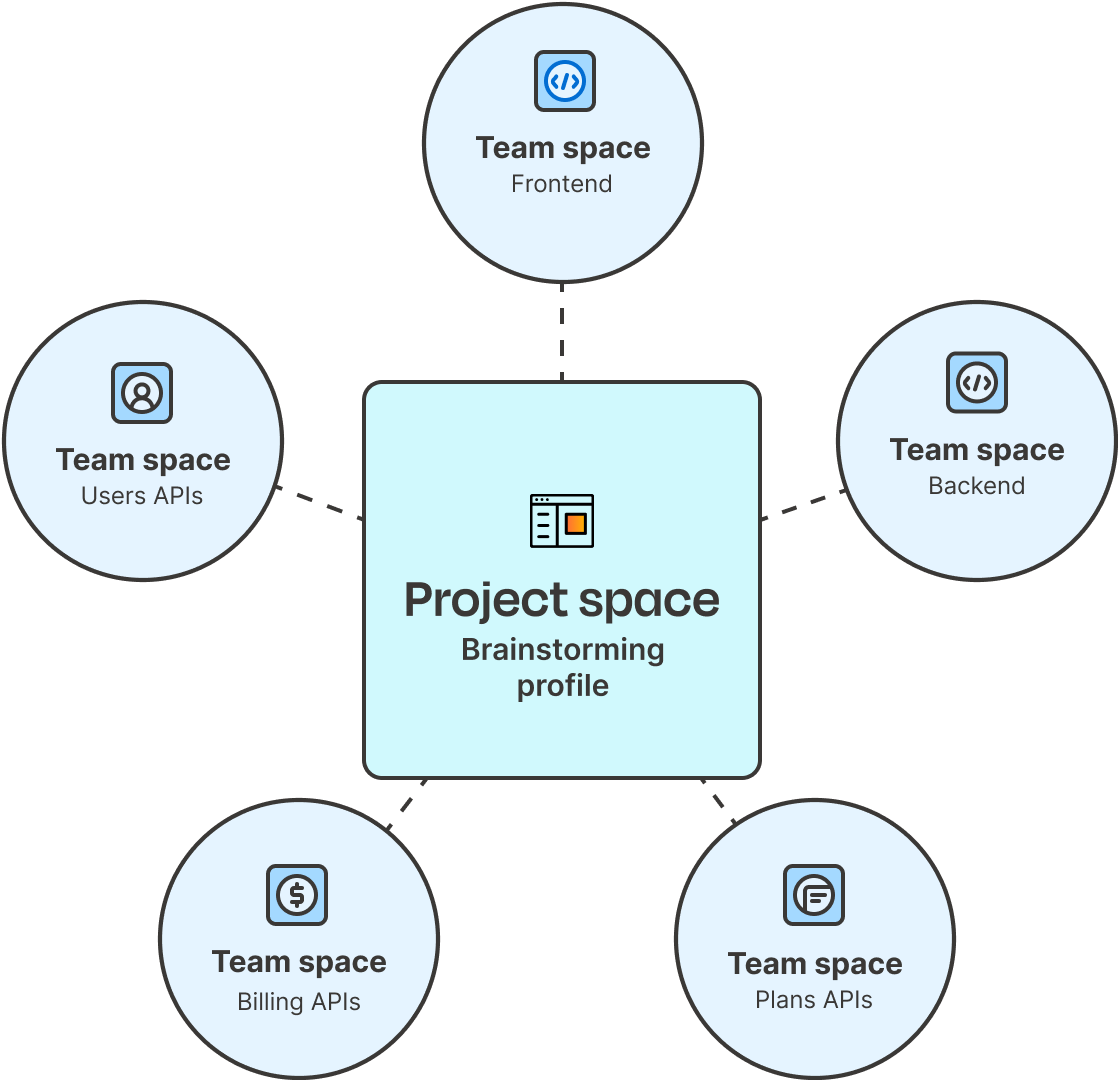POSTMAN BEST PRACTICES
Internal API Collaboration
Building quality APIs has never been more important. At Postman, we believe being API-first is the key to innovation in the AI era. We built Postman Best Practices to share the foundational ideas Postman is built on and enable you to do your best work.
Most organizations struggle with API sprawl. Teams build duplicate APIs because they can’t find what already exists, and they battle API drift as teams work in isolation.
In this chapter, you’ll learn collaboration patterns that reduce duplicate work, accelerate developer onboarding, and create the foundation for effective API governance.

Abhinav Asthana
Postman CEO and Co-founder

Ankit Sobti
Postman Field CTO and Co-founder
Engineering organizations often face the same API collaboration problem: teams building similar services without realizing it. When developers can’t find, understand, or rely on existing APIs, they build new ones. To fix this collaboration breakdown, you need to organize around how your APIs are actually used.
Start by understanding two fundamental API types and how they shape collaboration: app-specific APIs that serve individual teams, and reusable APIs designed for cross-team consumption. Most companies have a mix of both, and each requires different collaboration approaches.
An app-specific API is built for a single consumer, such as a specific UI, mobile app, or internal integration. These APIs are often developed within a single team or monolithic codebase to meet immediate project needs and are tightly coupled to the consuming application.
A reusable API is designed for multiple independent consumers across teams, partners, or external developers. These APIs are self-service, meaning other teams can discover, understand, and integrate them without synchronous collaboration with the producer.
For more guidance on app-specific and reusable APIs, refer to the types of APIs, workspaces, and collaboration models chapter.
Collaboration patterns
Different organizations need different collaboration methods. The right pattern eliminates duplicate work, improves API discoverability, and keeps teams moving fast. These four approaches cover some of the most common organizational structures and growth stages.
Single-team collaboration: app-specific APIs within each team
In this pattern, each team builds APIs primarily for their own applications and services. Teams work independently with minimal cross-team API sharing, focusing on speed and autonomy within their domain.
This pattern works for:
- Small to medium organizations where teams own distinct products or services with clear boundaries
- Rapid iteration within teams that don’t have many shared services

Implementation guide
Set up dedicated team workspaces where each group manages their APIs, documentation, tests, and any mocks or monitors they use. Establish consistent workspace practices across teams, including clear naming conventions and documentation standards, so that teams can learn from each other’s approaches without rigid oversight. Keep visibility open by default to encourage knowledge sharing and prevent accidental duplication.
Recommended practices
- Use shared team workspaces with real-time collaboration and commenting. Teams can collaborate by sharing collections and environments and providing feedback directly within the workspace.
- Integrate with Git to work within branches alongside your code, and connect Slack and Jira to tie API work into existing development processes.
Many teams maintain personal developer workspaces alongside team workspaces to keep experimental work separate from production APIs.
Common use cases:
- Legacy modernization: organizations moving from older API testing tools while maintaining team-based workflows
- UI-driven applications: platforms where every user interface action requires API calls that need frequent iteration
- Cross-functional teams: product, engineering, and QA working together within the same workspace to reduce bugs in production
- Independent team ownership: many teams building app-specific APIs without cross-team reuse requirements
- Vertical products: companies where each team owns a distinct area of the product and needs isolated collaboration
Visma improved collaboration and eliminated 50 minutes of meeting time per team each week.
Postman has created a positive synergy across the organization. Collaboration is now seamless between different teams, which has significantly improved our way of working.”
Mili Orucevic
Chief Software Quality Engineer, Visma
Cross-team collaboration: reusable APIs with discoverable hubs
In this pattern, teams maintain their own workspaces but also create discovery workspaces for APIs designed for reuse. Producer teams publish reusable APIs to shared spaces, and consumer teams fork what they need into their own workspaces.
This pattern works for:
- Growing organizations where some teams are building shared services that other teams consume
- Organizations with reusable components, but teams still need autonomy
- Companies moving beyond single-team development, but not ready for full platform governance

Implementation guide
Producer teams create dedicated workspaces for their reusable APIs with comprehensive documentation, onboarding guides, and change management practices. Make these workspaces self-service so that consumer teams can fork collections, understand the API quickly, and integrate without extensive support from the producer team. Make sure to set up comprehensive contract testing to prevent breaking changes from reaching consumers.
Recommended practices
- Communicate changes using workspace updates and assign clear maintainer roles for each shared API.
- Keep shared workspaces highly visible and consistent.
- Use Postman integrations for Slack or Jira to ensure consumer teams are automatically notified about important updates or breaking changes.
- Shared service teams: authentication, payment processing, or notification services that multiple product teams consume
- Platform API teams: infrastructure teams building APIs for logging, monitoring, or data access that other teams need
- Integration hubs: teams building connectors or adapters that multiple product teams use to integrate with external systems
Ready to collaborate on APIs? Share your work in Postman →
Platform-wide collaboration: centralized APIs with governance
In this pattern, a central platform team creates and maintains APIs for organization-wide use. These teams focus exclusively on building shared services rather than end-user applications, with governance processes to prevent duplication.
This pattern works for:
- Large organizations with dedicated platform teams and clear API governance needs
- Companies with standardization requirements across multiple business units
- Enterprises with compliance or regulatory requirements that need centralized control

Teams contribute and consume reusable APIs
Implementation guide
Platform teams work across multiple workspaces but centralize everything through your Private API Network to promote discoverability and prevent duplicate work.

Everyone contributes to and consumes shared APIs via multiple discovery workspaces
Invest heavily in self-service capabilities, including comprehensive documentation, working examples, onboarding guides, and automated testing. Since consumer teams depend on these APIs, treat them as products with clear SLAs, change management processes, and dedicated support. Visibility should be open by default—you can use RBAC to control access while maintaining discoverability.
Recommended practices
- Connect monitoring and alerting to make sure teams have visibility into failures and performance degradation, with actionable alerts routed to the proper owners.
- Set up Postman integrations for Slack and Jira to automatically notify consuming teams about API changes, deprecations, and maintenance windows.
Common use cases:
- Enterprise platform teams: central IT building APIs for user management, data access, or security services across business units
- Regulated industries: financial services or healthcare organizations requiring centralized API governance and compliance
- Large-scale standardization: companies with hundreds of teams that need consistent approaches to common functionality
Ready to centralize API development? Configure your Private API Network →
Project-based collaboration: temporary workspaces for cross-functional work
In this pattern, teams use short-term workspaces for brainstorming, drafting, demos, or initiatives that have yet to find a permanent home. These serve as staging areas before work moves to more authoritative spaces.
This pattern works for:
- Cross-functional projects that span multiple teams or departments
- Proof-of-concepts and experimental API development
- Training and onboarding new team members to API workflows
- Transitioning between other collaboration patterns

Implementation guide
Keep these workspaces private by default to avoid cluttering the global namespace. Set clear timelines and graduation criteria. Define when work should move to a permanent team or discovery workspace and when projects should be archived.
Use project workspaces for stakeholder demos, partner collaboration, or testing new API approaches before committing to new patterns in production. These workspaces are valuable for prototyping integrations, validating API designs with business stakeholders, and providing safe environments for learning.
Recommended practices
- Connect Slack and Jira to keep project stakeholders informed about progress and coordinate with broader project management processes.
- Establish archival processes so outdated projects don’t accumulate over time. Most project work should either graduate to permanent spaces or be cleaned up within a defined timeframe.
Common use cases:
- External partner integrations: collaborative spaces for building APIs with vendors, customers, or technology partners like payment processors or authentication providers
- Time-bound initiatives: projects with clear start and end dates, like system migrations, acquisitions, or major feature launches
- Prototype validation: testing new API concepts with stakeholders before full implementation
Ready to spin up workspaces for experimentation? Manage your workspaces →
